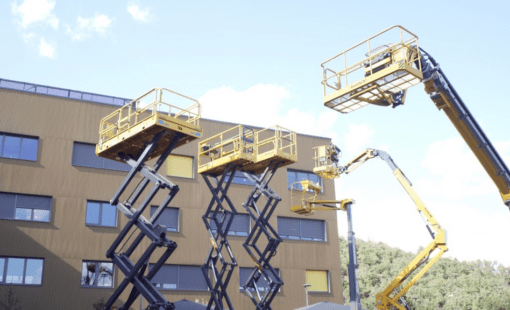Since the beginning of the 21st century, Product Lifecycle Management (PLM) has been seen as a panacea for companies looking for ways to increase their efficiency and responsiveness to new market opportunities. In the meantime, a certain disillusionment has set in among many: escalating costs, delayed go-live dates and unfulfilled promises on the part of providers have strained the patience both of the supervising executives and the nerves of those responsible for the program. However, things can work out in a different and more successful way, as the example of the French manufacturer of mobile working platforms Haulotte has shown.
PLM as the Keystone for Reliable Product Information
The great promise of PLM is to make all information on a product or product family fully available to all stakeholders involved in the various phases in a “trusted source of truth”, i.e. a reliable, robust digital source of information. Although the potential value of such a solution is obvious, its full realization has only succeeded in a small number of cases.
Bridging the Gap: Theory vs. Practice
On the way from theory to corporate reality, it became apparent that the cost of implementing a system that can read, analyze and process all available information and data is far higher than originally assumed. In many cases, companies limited their efforts to implementing a kind of digital drawing archive in which the approved documents are stored in a digital archive format such as PDF or TIFF.
However, this leaves a large part of the value proposition of PLM by the wayside – namely to provide a working and communication platform for all roles involved in a product development process – from the evaluation and prioritization of customer requirements, through detailed design and its validation, right up to the production release for the individual components. In practical applications, PLM installations therefore often only cover the area of detailed design, with the mechanical aspect of design (MCAD) being the main focus.
Innovating Beyond Tradition with PLM
The emphasis on mechanical engineering is based on the one hand on the tradition of engineering sciences, which have traditionally put the mechanical product into the center of attention. It is also grounded on the fact that today’s leading PLM software providers and their system environments have originated in mechanical design and CAD drawing management. As a result, regardless of the fact that electrical engineering and electronics are increasingly overtaking mechanics in terms of added value, they are often neglected in today’s product development management systems.
And yet the implementation of a PLM environment that supports the requirements of modern, electronically dominated product development is no rocket science. The secret is to concentrate on the essentials:
- Consolidating the number of CAD tools by adopting integrated, end-to-end solutions that are able to cover all phases of the product development process in their respective discipline (e.g. vehicle electrical system development).
- Selection of an open, PLM environment capable of integrating heterogeneous software solutions.
- A critical assessment and revision of established work processes with the aim of making the best possible use of the PLM technology with a minimum of customization and individual programming
By upgrading to E3.series, Haulotte was able to consolidate the schematic design and cable harness design for the electrical equipment of its mobile working platforms into a single environment. In addition, E3.series with its integrated design data management (DS-E3) offered the capability to reliably manage and version data and to reuse them in new projects, thus significantly increasing productivity. These features created the ideal conditions for integrating E3 into the Aras PLM environment. In our short film, the Haulotte project managers give an overview of the history of this successful project and the improvements that can be achieved with it.



